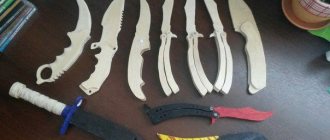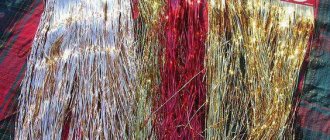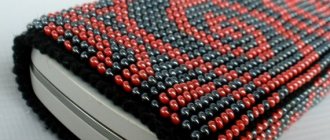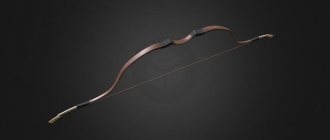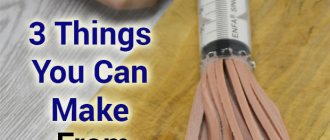There are often cases on the farm when a funnel is needed. At home, the scope of application of the device is varied: filtering and dosing liquid and bulk substances, pouring oil into the engine and much more. Yes, the market currently offers an assortment of types of such goods, but if circumstances require urgency, then you can make a funnel with your own hands. This does not require a lot of time and effort, and the result will allow you to cope with the task quickly and efficiently.
Homemade funnel.
What is a funnel and why is it needed?
A funnel is a device for pouring liquids or pouring bulk products through a narrow receiving opening. Various substances are also filtered and dosed. The design has the appearance of a hollow cone, which is narrowed downwards into a tube.
The device has been known since ancient times. They were made from wood, birch bark, and clay. During the Middle Ages, materials changed: glass, porcelain and metal became popular. Modern household funnels are most often made from plastic, propylene and tin.
How to make a false bottom with your own hands
The simpler the device, the greater the temptation to make it yourself and thereby save money. The false bottom is one of such structures.
It is a plate with small holes and a device for fixing in dishes. It seems like it could be easier than taking a sheet of metal and drilling holes in it. If you decide to make a false bottom with your own hands, first study its features.
What you need to know about false day
When building a false bottom for a boiler with your own hands, remember its main function - to protect the heating surface from thick raw materials burning to it. This product can be malt when brewing beer, grain mash when distilled in a moonshine still, and vegetables when stewing. You can read more about the application and selection features here.
To fulfill its role, the false bottom must have the following characteristics:
- Do not interact with alcohol. Material neutral to aggressive environments – food grade stainless steel;
- Withstand the pressure of thick raw materials. For example, before you make a false bottom for a moonshine still, evaluate the capacity of the distillation cube. The larger it is, the stronger the sieve should be. The average thickness of the false bottom steel is no less than 0.8-1 mm. The legs, tripod or welded rim on the inside of the distillation or wort kettle must not bend under the weight of the mash.
The size, shape and number of slots in the false bottom are sufficient to allow liquid media to pass through and solid media to be retained. Frequent small holes sometimes do not cope with this task.
Description of the experience
The water funnel is an amazing sight, reminiscent of a tornado - with a long flexible “proboscis”, writhing and swaying like a living creature.
“To get a spectacular whirlpool in miniature, the water needs a little help - spin, stir the water, give the flow additional centrifugal force.
This is not difficult to do if you build something like an hourglass from available materials.
You will need
- Two identical plastic bottles
- Glue that securely holds plastic together
- Scotch
- And water, of course!
So, first you need to drill fairly wide holes in the bottle caps. Then the covers are glued to one another with the outer sides. For reliability, they can be additionally wrapped with tape on the outside.
Now we pour water into one of the bottles, screw a structure of two caps on top and screw the empty bottle into it.
Handmade: how to bend a gutter segment
To make parts with a radius profile from tin, you should prepare a template in advance; it is not realistic to carry out such work “on your knees”.
Take an inch tube and weld two reinforcement rods at its ends as drive handles. Make a cut along the seam of the tube with a grinder, then sand the edges well, you can even cover it with a silicone hose unraveled in two.
Clamp the strip of roofing iron on the edge of the table, insert the end into the cut and rotate the tube 360º so that the “straight” petal in the center of the twist is parallel to the rest of the sheet.
You can form the tray using a rack pipe bender, or you can use a loose 200 mm pipe. We bend the smooth edge of the workpiece at 90º, press the edge against the table with the wall of the pipe and straighten the iron with a mallet. We finish the twisted edge with our hands, bending it slightly inside the arc. Remove the workpiece from the template and press the rectangular fold.
This molding can be made in segments of 1–1.5 meters, which are then easily joined at the installation site and secured with a cutter. The presence of two stiffening ribs will prevent the tray from bending between the fastenings under the weight of the ice, and a hidden groove will allow you to further strengthen the drain on specially shaped hooks.
Funnel making technique
If you understand that a seam connection is the essence of almost any tin product, you can give free rein to your imagination and assemble complex products from several simpler ones. An example of this is all kinds of funnels, tees and corner bends.
The funnel consists of two short pieces of pipe of a larger and smaller diameter. They are assembled like regular pipes, only their edges are flared outward by 8–12 mm. Subsequently, these bent sides are used for further production of folds, or, if there are no complaints about tightness, the hard edges are folded and fastened together with a cutter.
The riveting technique for different products may differ significantly, but in reality this is not as important as the correct drawing up of the pattern. All blanks should be cut only according to the template. For example, for the central part of a funnel - a truncated cone - the pattern is a ring segment, where the length of the inner arc is determined by the diameter of the drain, and the outer arc by the diameter of the receiving socket.
Unfortunately, the equipment for the production of such products has a very narrow specialization, and therefore is not available due to both its high price and low prevalence. However, all products made of tin and sheet metal, be it a bucket, a tank or an ordinary skate, can be made manually; machines only facilitate some operations.
Paper cone: step-by-step instructions
First of all, you need to choose good working material - it depends on the purpose for which you need such a craft. In any case, it must be able to bend and hold a given shape without being damaged. If you take regular soft paper, it should not tear, and the cardboard should not be too hard, otherwise it will be difficult to deform. To check the quality of the material, try twisting the sheet into a tube: if this does not cause you any difficulties and does not lead to rupture, you can work.
In order to make a cone out of cardboard or paper with your own hands, in addition to the main material you will need:
- ruler (length depends on the length of the product);
- pencil;
- compass;
- stationery knife or scissors;
- glue.
The principle of operation is very simple, the only thing where difficulties sometimes arise is preparing the template. Creating a cardboard pyramid takes no more than a quarter of an hour, excluding the time for drying the glue. If you are in a hurry, you can fix the shape with tape (for options when the cone is the base that is not visible) or with a stapler (for small crafts).
Since the issue of using a cardboard cone as a headdress (relevant for children's costumes) was raised, it is necessary to remember how to make the necessary calculations. Of course, if you have the required height of the product, which cannot be changed, you will simply have to set aside the length of the head circumference along an arc and cut out the resulting part. However, if you just need to prepare a sharp cone (when the angle of the template is 60 degrees), you will need to make calculations. The formula from the school curriculum is that the length of the arc of a circle with an angle of 60 degrees is equal to the product of the radius by 3.14, which is divided by 3. For an angle of 45 degrees, you need to divide the product by 4.
Oil cans with long spout
For convenient transportation of fuel and special liquids, canisters with a long flexible spout are provided. This canister is convenient to use: the risk of spilling liquid is minimized. In addition, if the container is used for storing and handling liquid oils, it is possible to use special dispensing caps for the convenience of lubrication work. The covers are available in different colors, which allows you to comply with the conditions of any accepted coding system in production.
However, such canisters are expensive and often leak, leaving stains on the car interior.
Galvanization and polymer coating: what are the differences?
For most modern machines, it makes no difference what type of sheet metal is bent on it. But there are some difficulties in working with metal coated with a polymer composition. It’s easier with galvanizing, because its protective layer is more resistant to abrasion and damage. Therefore, nothing prevents you from bending galvanized steel with blows or sliding it along a rusty template - the main thing is that there are no deep scratches.
The coating with special paint has less mechanical strength, it is thinner and peels off relatively easily. It would not be the best solution to bend rolled polymer on old sheet bending machines with defective rolls, rotary beams or loose hinges, and even more so, such metal should not be processed with a mallet. Likewise, you should not use any available devices that can damage the anti-corrosion film.
Little tricks
- Small half-liter bottles are easier to manipulate, and larger ones produce more spectacular swirls.
- The water can be colored a little. And even add glitter to it!
- If you want your child to also get practical benefits from your activities, tell him how to behave on a river or in the sea if he gets caught in a whirlpool. The strength of the whirlpool weakens at depth, so swimmers who feel like they are being pulled into a funnel are advised not to waste energy fighting the current, but to allow it to pull them in. Having dived into the funnel, you need to make several strong strokes underwater and then, most likely, you will be able to emerge far from the danger zone. But the best thing, of course, is never to get into such a situation!
Warm, cool, open
Let's say you bought shawarma - how to get it home hot? You know: Rio X has a fireplace! Very beautiful, it's a pity that it doesn't warm up.
Powerful seat heating will help out: turn it on, put the shawarma on, cover with clothes. We won’t reheat it, but we will maintain the temperature.
How to deliver cold drinks and food in hot weather? Just put a bag of groceries under the passenger seat (on the second row side), turn on the air conditioning and direct the air to your feet - there will be a refrigerator there!
The drinks are chilled, but how do you open a glass bottle with a metal stopper? Using a seat belt buckle. It's two in one: a lock and an opener! We say: a truly universal car!
System calculation: home drainage planning ↑
At the planning stage, markings are made - they mark the installation locations of horizontal (gutters) and vertical (gutters) lines. After determining the footage, calculate the number of additional parts that are needed to assemble the system: fasteners, plugs, connectors, funnels and adapters.
Meterage of gutters and number of funnels: how to calculate correctly ↑
The number of horizontal lines depends on the roof structure and the length of the slopes. The simplest system of two gutters and two drainpipes is the best option for a gable roof with a total area of up to 100 square meters. m and the length of the slope not exceeding 10 m.
Scheme for calculating the number of drain lines
In this case, there is no need to double tilt from the center. And you can make a gutter for a drain from both ready-made and homemade parts. The length of the horizontal tray is equal to the length of the slope. Diameter - 10 - 12 cm. The slope of the drain is up to 2 - 3 mm per linear meter. Factory parts are produced in standard length - 3 m.
Installation parts
The number of funnels designed to drain water from the tray into the drainpipe is equal to the number of horizontal lines. If the length of the straight section is more than 10 - 12 meters, then 2 funnels and 2 drainpipes are installed along the edges.
Basic parameters for installing gutters
If the total number of funnels in the planned scheme is two, then calculating the length of the drainpipes is easy. The height of the building from the bottom edge of the roof to the ground level is multiplied by 2.
When planning more complex structures, calculations are performed for straight lines, drains and planning installation in difficult areas (on protrusions, in corners) with the selection of special products - corner connectors.
Additional parts: mounting hooks and connectors ↑
To make a gutter for a drain, you will additionally need:
- 2 caps for each horizontal line.
- Connectors - every 3 m if finished parts are connected.
- Brackets – for 10 m – 20 pcs. The distance between the hooks should be within 50 - 60 cm.
Gutter details
Hooks are selected depending on the type of fastening. If a strong gable board is installed under the roof slope, not covered with clapboard, it is more convenient to install the box on short brackets.
Hooks with extension
When fixing to the rafter sheathing, choose ready-made adjustable or non-adjustable hooks with an extension. Such fastenings can be made independently from strips of thick steel 3–4 cm wide.
To connect the funnel to the pipe, you will need 2 elbows of 40° to lead the drain to the pipe installation line. To attach the pipe to the walls, use special holders or clamps. The pipes are connected with couplings.
Inclined cone development
Let us consider the procedure for constructing a scan of the lateral surface of an inclined cone using the approximation (approximation) method.
- We inscribe the hexagon 123456 into the circle of the base of the cone. We connect points 1, 2, 3, 4, 5 and 6 with the vertex S. The pyramid S123456, constructed in this way, with a certain degree of approximation is a replacement for the conical surface and is used as such in further constructions.
- We determine the natural values of the edges of the pyramid using the method of rotation around the projecting straight line: in the example, the i axis is used, perpendicular to the horizontal projection plane and passing through the vertex S. Thus, as a result of rotation of the edge S5, its new horizontal projection S'5'1 takes a position at which it is parallel to the frontal plane π2. Accordingly, S''5''1 is the natural value of S5.
- We construct a development of the lateral surface of the pyramid S123456, consisting of six triangles: S16, S65, S54, S43, S32, S21. The construction of each triangle is carried out on three sides. For example, △S16 has length S1=S''1'', S6=S''6''1, 16=1'6'.
The degree to which the approximate development corresponds to the actual one depends on the number of faces of the inscribed pyramid. The number of faces is chosen based on the ease of reading the drawing, the requirements for its accuracy, the presence of characteristic points and lines that need to be transferred to the development.
Transferring a line from the surface of a cone to a development
Line n lying on the surface of the cone is formed as a result of its intersection with a certain plane (figure below). Let's consider the algorithm for constructing line n on a scan.
- We find the projections of points A, B and C at which line n intersects the edges of the pyramid S123456 inscribed in the cone.
- We determine the natural size of the segments SA, SB, SC by rotating around the projecting straight line. In the example under consideration, SA=S''A'', SB=S''B''1, SC=S''C''1.
- We find the position of points A, B, C on the corresponding edges of the pyramid, plotting on the scan the segments SA=S''A'', SB=S''B''1, SC=S''C''1.
- We connect points A, B, C with a smooth line.
The easiest way
No tools are required to quickly make a funnel. Just take a sheet of paper and fold it diagonally towards you so that the edge of the short side of the rectangle (and the sheet of paper is a rectangle, not a square) coincides with the edge of the long side. The result is a right triangle. We press down the diagonal at the bend so that our workpiece does not unfold, and continue the process.
Now you need to fold the resulting workpiece again in the same manner as before, only now we bend the upper side of the triangle towards ourselves, the one that represents the bend made the first time. Compare the edges from below again. The result is a sharp triangle, one of the short sides of which consists of unevenly protruding edges. It’s okay, this will not affect the manipulation of water or bulk materials that we will pour/pour through the future funnel.
Cone according to template
If you need this geometric figure for a future craft, but none of the above options describing how to make the desired paper cone suits you, there is a way out.
What is needed for production:
- thick paper;
- PVA or tape;
- scissors;
- pencil;
- sample.
Let's get started with the work:
- download the template that we have prepared and print it;
- you can cut out a blank according to the template or just immediately use the material for the cone and print the template on it;
- We roll up the material and fasten the edges in a way convenient for you (with tape or PVA glue).
During the binding process, be sure to keep the bottom edges straight. To do this, place the not yet assembled material on the table and then bend it. After gluing. Check if the figure is level. It shouldn't wobble.
Homemade funnel
Situations often arise when there is no time or opportunity to go to the store to buy a funnel. Then you can make the device yourself.
From tin
A homemade funnel made of tin can be of any size and used for various purposes: both for pouring dry substances and for pouring liquids. It is airtight, lightweight and does not require complex care after use.
DIY tin funnel.
To work you will need:
- paper, pencil and ruler for drawing;
- tin;
- stationery scissors and for cutting metal;
- soldering machine and tools necessary for soldering.
The first stage of production is the drawing. Then the pattern is transferred to a sheet of tin and the parts are cut out. Having cut out the sidewalls, it is necessary to clean the soldering areas and bend the edges according to the drawing. The parts are carefully soldered. Ready! For ease of use, you can attach a handle for holding and a hook for further storage.
From the bottle
To make a funnel from a plastic bottle, you will need the following tools:
- straight bottle;
- tape or tape;
- scissors.
Funnel made from a plastic bottle.
Manufacturing does not require special equipment or skills.
Progress:
- Preparing the bottle. For the funnel, you need to cut the bottle according to the desired volume.
- An even strip is cut from the remaining segment for the future “nose”.
- Roll the strip into a tube and place it in the neck of the bottle.
- Carefully secure the tube with tape or tape and check the tightness of the structure.
Use of improvised means
When it is not possible to buy a funnel or make it yourself, you can use improvised means, most importantly, use your imagination and ingenuity.
Here are some good options:
- One replacement option is a screwdriver with a long, flat blade. To add oil to the engine, place the end of a screwdriver into the oil hole and carefully pour oil along the tip.
- Another way to replace a funnel for pouring liquid is to use a balloon. It is placed on the neck of a canister or bottle, an incision is made on the other tip and the required liquid is poured.
- A thick sheet of paper, cardboard or paper cup will be an excellent imitation of a funnel if you roll it up like a bag and secure it.
Scheme of the step-by-step process of making a funnel from cardboard.
All of the above methods can be used if there is an urgent need to transfer liquids or pour dry substances.
But when using such methods, it is worth remembering that the structures are not airtight and do not have the necessary strength.
The first simple product
First, let's make the simplest roofing element - a ridge. So that it subsequently lies evenly and tightly on the roof, first determine the angle of rotation by placing a long thin strip on one of the slopes.
The width of the ridge shelves is from 15 to 30 cm; accordingly, you will need a strip twice as wide with an allowance of 10 mm on each side. This edge can have 2-3mm of unevenness, so an even cut is not necessary. Apply a marking of three longitudinal lines: the center of the ridge and both its edges. Place the strip centered on the edge of the table and press it with a block under two clamps along the marking line.
You need to place a flat board underneath the protruding edge of the sheet and bend the shelf upward, observing the marked rotation angle of ±10º. Now the workpiece needs to be released and moved back so that the edge marking line falls exactly on the edge of the block. We clamp the workpiece again and tighten the clamps well, and then we go along the edge with a mallet, turning it perpendicularly upward.
Edge processing is necessary to stiffen the ridge profile. To make them, you can also use a rule rail pressed through a block: the wedge-shaped end of the bar will allow you to bend the edge more than 90º. After preliminary bending of both edges, they need to be laid on a wooden sleeper and beaten with a mallet, flattening the bend. In many sheet benders, this operation is performed with one pass of the roller bender carriage.
When finishing the edge by hand, go from one edge to the other sequentially, and then smooth out any visual unevenness with your hands. Already at this stage, you can think about partial mechanization and creating a primitive machine. For example, if the bending bar is made of metal or hard wood and secured to two-axis hinges, the processing will be much faster and more precise.
Which is cheaper: make gutters yourself or buy ready-made ones
After calculating the number of parts and the total length of the horizontal and vertical branches, you can choose what and how to make the gutter and drain funnels in order to both save money and install a system that will last at least 10 years.
Plastic PVC structures
The easiest way to make a gutter yourself is to assemble a line of ready-made PVC trays and connectors. Plastic systems are cheaper than metal-polymer ones. Processing and installation do not require special skills. The material is easy to cut with a hacksaw; the kit includes all the necessary connectors. No professional tools are needed for assembly.
The advantage of PVC gutters is aesthetics. It is possible to choose a system to match the roof covering or the color of the cladding of the under-roof space. The material does not fade in the sun and can withstand significant temperature changes.
Metal-polymer parts
Metal-plastic gutters are steel products in a polymer shell. The cost of metal parts is higher than plastic ones. The service life of the drain is from 30 years. The material has high strength - it can withstand loads during snow melting and melting, and does not crack in frost. Used in drainage systems without temperature restrictions.
Working with metal-polymer parts requires preparation. Cutting of molded products is carried out exclusively with special scissors or a hacksaw for metal. The use of cutting discs is not allowed - the material must not be overheated during processing.
Products are transported in protective film. During assembly, care must be taken to avoid damaging the polymer layer.
The only drawback of metal-polymer drainage is the noise of the gutters. If you plan to install a drain on a low house with an attic, preference is given to quiet polymer trays.
Materials for making gutter parts with your own hands
To make a drain funnel and gutter with your own hands, use galvanized steel and plastic pipes for external sewerage.
Factory drain made of steel
Galvanized steel is sold in sheet form. To make parts, you need some metalworking skills. A system assembled from homemade products will not be durable - during cutting, the thin zinc layer is damaged, and the edges at the cutting site are left without an anti-corrosion coating.
To work with steel you will need:
Bending a sheet on a wooden base
The sheets are cut to the planned dimensions, bent to shape and the edges are folded in the form of a fold for subsequent joining of the part.
The box parts are connected to each other in two ways: by hot soldering or by installing steel connectors, which are secured with screws.
It is not profitable to make gutters from steel sheets yourself. Flaws:
Special machine for working with steel
It is better to try to assemble a simple system from sewer pipes. Select parts intended for installation outside: pipes for external sewerage - orange. You will have to come to terms with the color - white or gray pipes are intended for indoor installation, the material of manufacture is not frost-resistant, ultraviolet-resistant or high-temperature resistant. Taking into account the fact that in summer the drain is exposed to direct sunlight at a temperature of 40 degrees, and in winter at 20 degrees below zero, pipes for interior work will not be able to last even 1 season.
Parts for making your own drain
To work you will need:
Coupling for gutter connection
Tee with 90° bend – for funnel
Elbows with different angles are used for installation when changing direction: in corners, under a funnel
For convenient operation and quick installation, you can select pipes of the same diameter for gutters and drains and thus save on waste.
How to make a gutter and secure a funnel with your own hands
To assemble and fasten horizontal sections of the drain, you will need simple tools:
Installation of brackets: installation of ready-made and homemade mounts
First of all, it is necessary to secure brackets under the roof - hooks that hold the trays.
When using short non-adjustable brackets, mark on the gable board the extreme point where the first fastener will be fixed. The distance from the edge of the roof is up to 15 cm. A line with a slope is formed from this point. The distance to the last fastener in meters is multiplied by 2. The resulting value is the difference in height in millimeters between the first and last bracket.
Distance from hook to edge of joints
Example. If the distance between the hooks is 8 m, then the height difference is: 8 x 2 = 16 mm. This is the minimum acceptable slope value. Maximum – 8 x 3 = 24 mm.
Slope and calculation of the number of brackets
The installation points of the extreme elements are connected. The brackets are attached along the marked line in increments of 50 cm.
If hooks with extension strips are installed, then after fixing the first bracket to the flooring, measure the distance between the top edge of the board and the middle of the hook. From this point, a slope is formed towards the funnel.
An easy way to get the slope right
To make the process easier, you can mark the fold directly on the extension strips. Lay out a row of numbered hooks end to end. A straight line is drawn from the bend point of the first. On the extreme bracket, measure the required slope value and place a mark below the first line. Connect to the point on the first element. During installation, the hooks are attached to the line, and the extension is simply bent according to the markings.
Installation of fasteners with extensions
Assembly of plastic and metal-plastic structures
Plastic trays are connected to each other using special parts. Calculate the joint points so that the distance from the edge of the connector to the hook is at least 2 cm. If connectors with rubber seals are selected, then the gutter is installed so that there is a gap of 5 - 6 cm between the edges of the two connected trays. This distance is sufficient for free movement parts during thermal expansion.
The second method is glue. The connector is treated with an adhesive composition: 3 strips of sealant are applied. Two - on the edges and one in the center. Press the groove against the connector and remove any remaining adhesive.
Plastic plugs are installed along the edges of the line.
Plugs, funnel and brackets at the edge of the line
The funnel is mounted according to the connector principle. Make sure that the distance from the outer bracket to the edge of the funnel is up to 5 cm. If the factory funnel is equipped with a seal, then additional sealing is not carried out.
The connection is made on brackets or parts connected on the ground are installed if 2 craftsmen are working.
Instructions for the manufacture and assembly of drainage from PVC pipes
When selecting sewer pipes for a homemade drain, pay attention to 2 important points:
How to make a gutter from a regular sewer pipe? Cut the pipe lengthwise exactly in the center: you will get two gutters 3 m long. For gutters, it is better to buy pipes without connecting sockets.
Slope of sewer pipe gutter
For cutting, use a hacksaw, jigsaw, or grinder with a disk (preferably with large teeth).
Tray with roof connector
The couplings are also cut in half - you get 2 gutter connectors. There is a seal inside the coupling - it is cut separately and placed into the part.
Marking for cutting pipes and joining parts
The joints must be sealed using acrylic or silicone construction sealant.
What to make the plug from? When purchasing tees for funnels, choose products with decorative covers. The lid must be cut into 2 halves and glued with sealant to the edges of the tray.
Tee with factory threaded cap
In the same way as the connector, the upper part of the tee is cut. The product is cut so that the outlet is located under the gutter. Fix the funnel with sealant or screws. The elbow is connected to the lower outlet with the socket facing up.
Artistic homemade funnel from a sewer tee
The pipe is assembled from pipes with connecting sockets. On the top pipe you need to install a bend at 40 - 90 o to connect the drain to the gutter. Measure the length of the segment between the knees. Cut a piece of pipe without sockets and connect the system.
In the lower part, install a branch - an elbow, cut the part so that the drain falls into the center of the rain inlet or into the ground, at a distance of 40 - 50 cm from the edge of the blind area.
Source
Metal bending on rollers
07 Dec 2013 Category: Mechanics |
Recently, I have received several requests from blog readers for help in solving the same problem: how to determine the final location of the middle roller (roll) when working on three-roll sheet bending rolls and profile benders...
...relative to the position of the outer rollers (rolls), which will ensure bending (rolling) of the workpiece with a certain specified required radius? The answer to this question will increase labor productivity when bending metal by reducing the number of runs of the workpiece until a suitable part is obtained.
In this article you will find theoretical
solving the problem. Let me make a reservation right away: I did not apply this calculation in practice and, accordingly, did not check the effectiveness of the proposed method. However, I am confident that in certain cases metal bending can be done much faster using this technique than usual.
Most often, in normal practice, the final location of the movable central roller (roll) and the number of passes until a suitable part is obtained is determined by the “poke method”. After a long (or not so long) development of the technological process on a test part, the coordinate of the position of the central roller (roll) is determined, which is used for further reconfiguration of the rollers, producing a batch of these parts.
The method is convenient, simple and good for a significant number of identical parts - that is, for mass production. In single or “very small-scale” production, when it is necessary to bend different profiles or sheets of different thicknesses with different radii, the loss of time for adjustment “at random” becomes catastrophically huge. These losses are especially noticeable when bending long (8...11 m) workpieces! While you make the pass..., while you take measurements..., while you rearrange the position of the roller (roller)... - and all over again! And so a dozen times.
Calculation in Excel of the location of the moving middle roller
Launch MS Excel or OOo Calc and get started!
General rules for formatting spreadsheets that are used in blog articles can be found here.
First of all, I would like to note that sheet bending rollers and profile benders of different models may have movable outer rollers (rollers), or they may have a movable middle roller (roller). However, for our task this is not of fundamental importance.
The figure below shows the calculation diagram for the problem.
At the beginning of the process, the part to be rolled lies on two outer rollers (rolls) having a diameter D
. Middle roller (roll) with diameter d
brought
until it touches the top of the workpiece
.
Next, the middle roller (roller) moves down to a distance equal to the design size H
, the roller rotation drive is turned on, the workpiece is rolled, the metal is bent, and the output is a part with a given bending radius R
!
H
correctly, quickly and accurately . This is what we will do.
Initial data:
1. Diameter of the movable upper roller (roller) /for reference/ d
write in mm
to cell D3: 120
2. Diameter of support rollers (rolls) with rotation drive D
to cell D4: 150
3. Distance between the axes of the support outer rollers (rolls) A
to cell D5: 500
4. Height of the section of the part h
to cell D6: 36
5. Internal bending radius of the part according to drawing R
to cell D7: 600
Calculations and actions:
6. Calculate the estimated vertical feed of the upper roller (roll) H calc.
in mm excluding springing
in cell D9: =D4/2+D6+D7- ((D4/2+D6+D7)2- (D5/2)2)(½)
=45.4
7. Adjust the rollers to this size H calculated
and make the first run of the workpiece. We measure or calculate the resulting internal radius from the chord and height of the segment, which we denote by R
and write down the resulting value in mm
to cell D10: 655
8. We calculate what the calculated theoretical vertical feed of the upper roller (roll) should be H 0calc
in mm for the manufacture of a part with a radius R
excluding springing
in cell D11: =D4/2+D6+D10- ((D4/2+D6+D10)2- (D5/2)2)(½)=41,9
H0calc =D/2+h+
R0 - ((D/2+h+ R0 )2- (A/2)2)(½) 9. But a part with an internal bending radius R was obtained with the upper roll lowered by size Hcalc , and not H 0calc .
We calculate the correction for back springing
x
in mm
in cell D12: =D9-D11=3,5
and R
have similar dimensions, then it is possible with a sufficient degree of accuracy to take the same correction value
x
to determine the final actual distance
H
to which the upper roller (roller) must be moved down to obtain an internal radius
R
.
We calculate the final calculated vertical feed of the upper roller (roll) H
in mm taking into account springing
in cell D13: =D9+D12=48,9
Processing the seam joint
The final stage involves processing the joining seam, that is, crimping it. To do this, the upper part of the L-shaped fold is folded down, wrapping the edge of the other fold. The result should be a kind of sandwich located perpendicular to the pipe. To obtain a joining seam, you need to press the sandwich to the product.
For greater reliability, the joining seam is strengthened using rivets. However, do-it-yourself tin pipes using this joining method do not require additional reinforcement.
From a flat sheet to a round shell:
Rollers with an asymmetrical arrangement of rolls (Fig. 11) produce almost complete bending of the shell. The most modern are four-roll machines (Fig. 12), which perform rolling and hemming of edges in one cycle. The bending radius of the shells is checked using templates. Possible defects in rolling of cylindrical shells are shown in Fig. 14.
Also, the methods for obtaining the desired shape are different.
Bending of conical shells is done in several ways:
1) By installing at an angle the middle roll for symmetrical three-roll machines and the side roll for asymmetrical three-roll and four-roll rollers (Fig. 15). 2) Flexible along the center line sequentially in different areas (Fig. 16) on rollers. First, the edges are hemmed, then the middle of the workpiece is bent in each section with reinstallations. This method leads to increased wear and tear on the equipment. 3) Bending of shells on rollers with replaceable conical rolls. This method is justified in serial and mass production. 4) Rollerless method for sheets up to 20 mm thick. In Fig. 17 shows the folding method. The edges 3 and 4 of the workpiece are fixed in supports 2 and 5, brought together, and the supports are simultaneously rotated in different directions. Next, the edges of the conical shell are joined using tacks and removed from the machine. 5) The most productive method is to manufacture conical shells in dies (Fig. 18). Before welding parts of the shells, they are pre-fixed to prevent deformation of the elements and ensure welding gaps. Aligning the edges is usually done with clamps and assembly rings for thin sheets (Fig. 19). Two clamps are installed on one shell at the ends. The cylindricity of the shells is ensured by special devices with jacks that push the part apart. When assembling dimensional parts, tie strips and wedge connections are used (Fig. 20).


